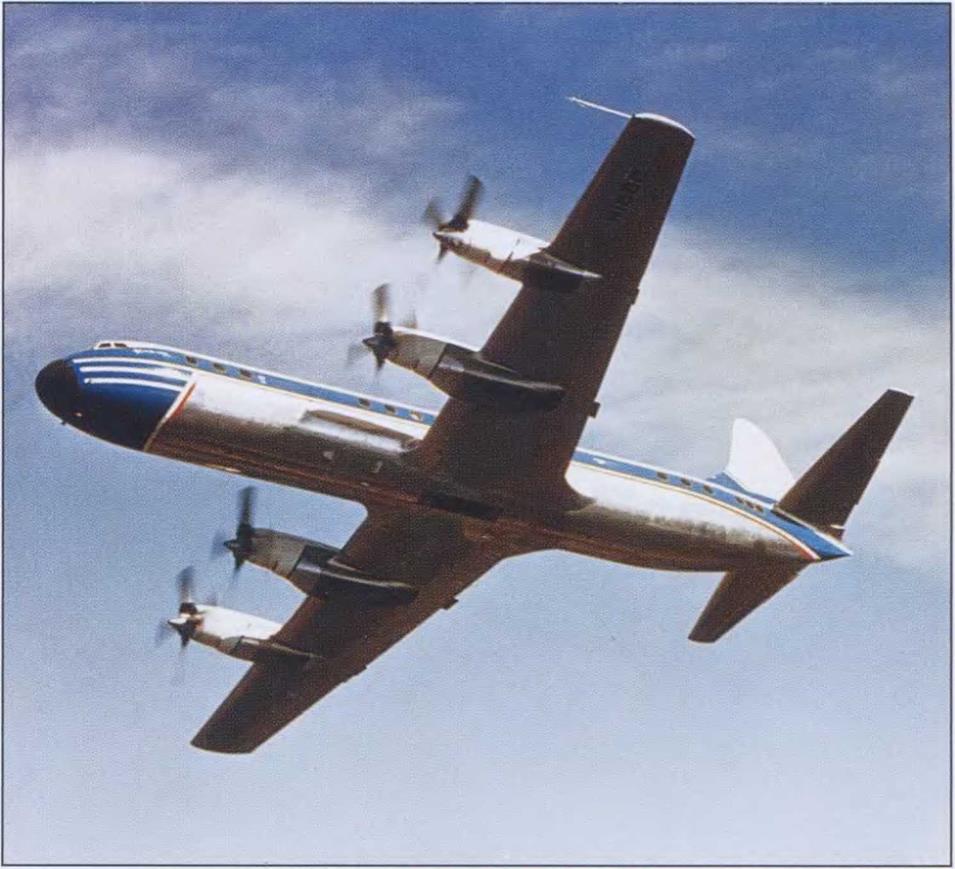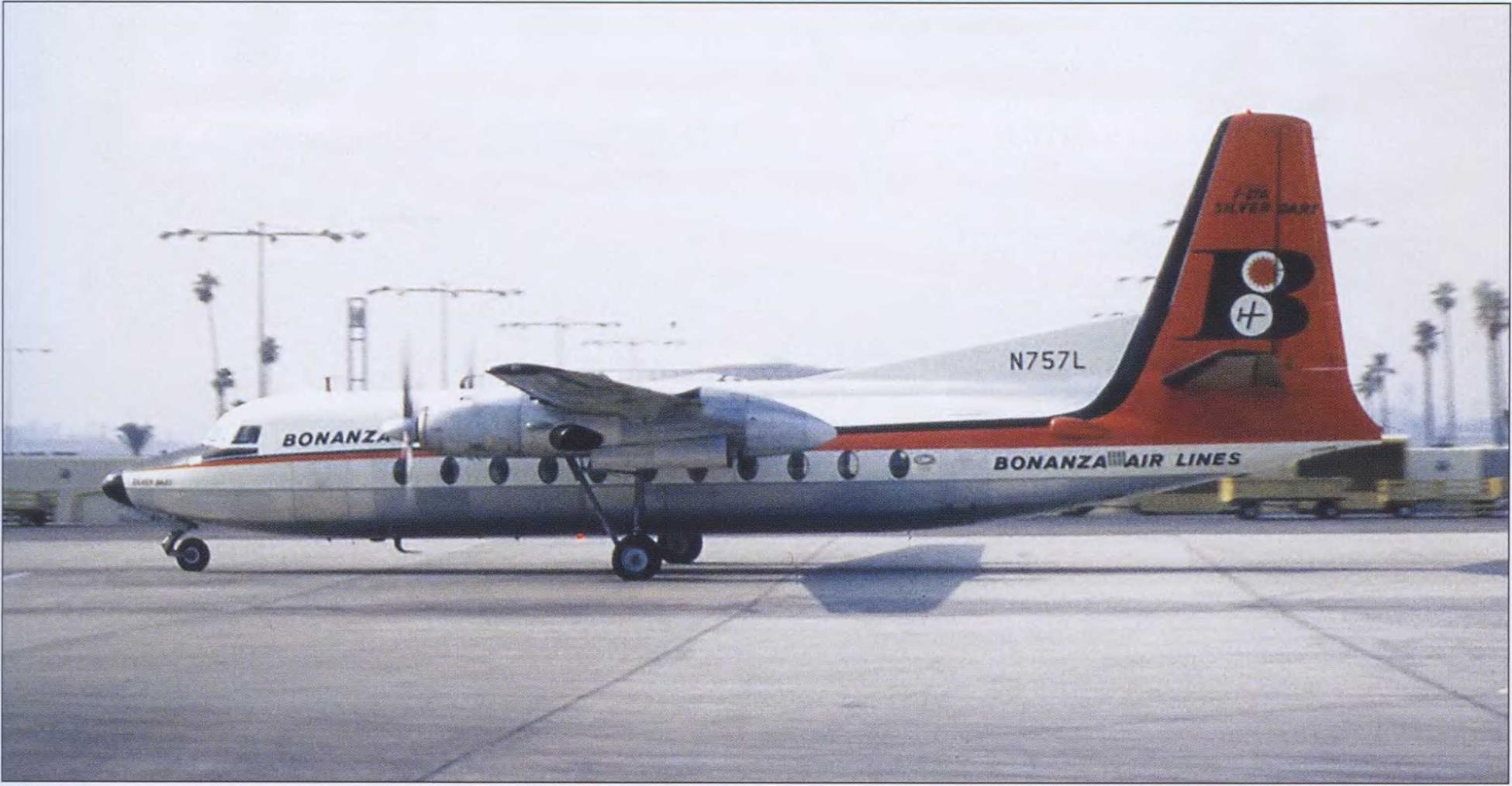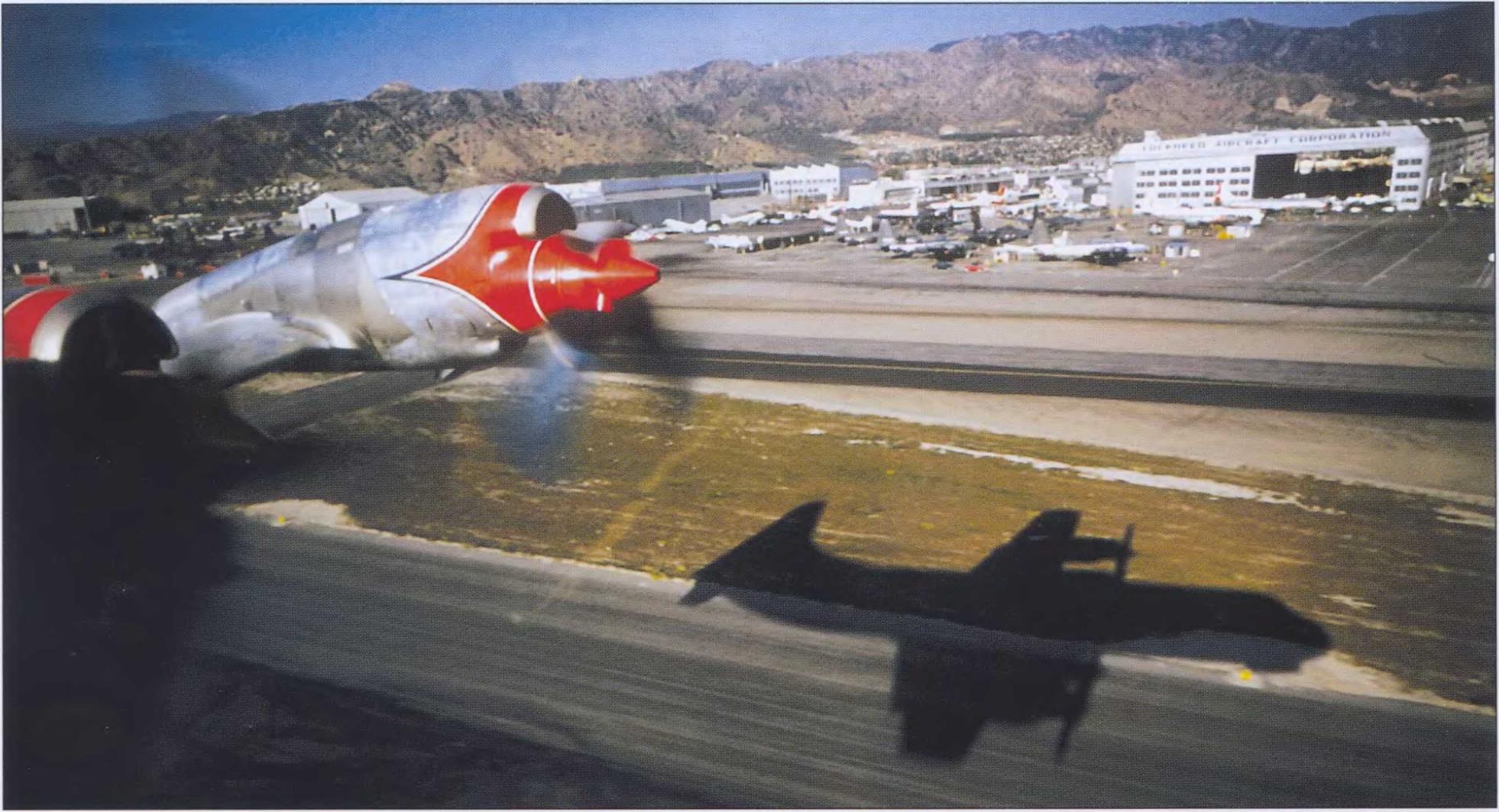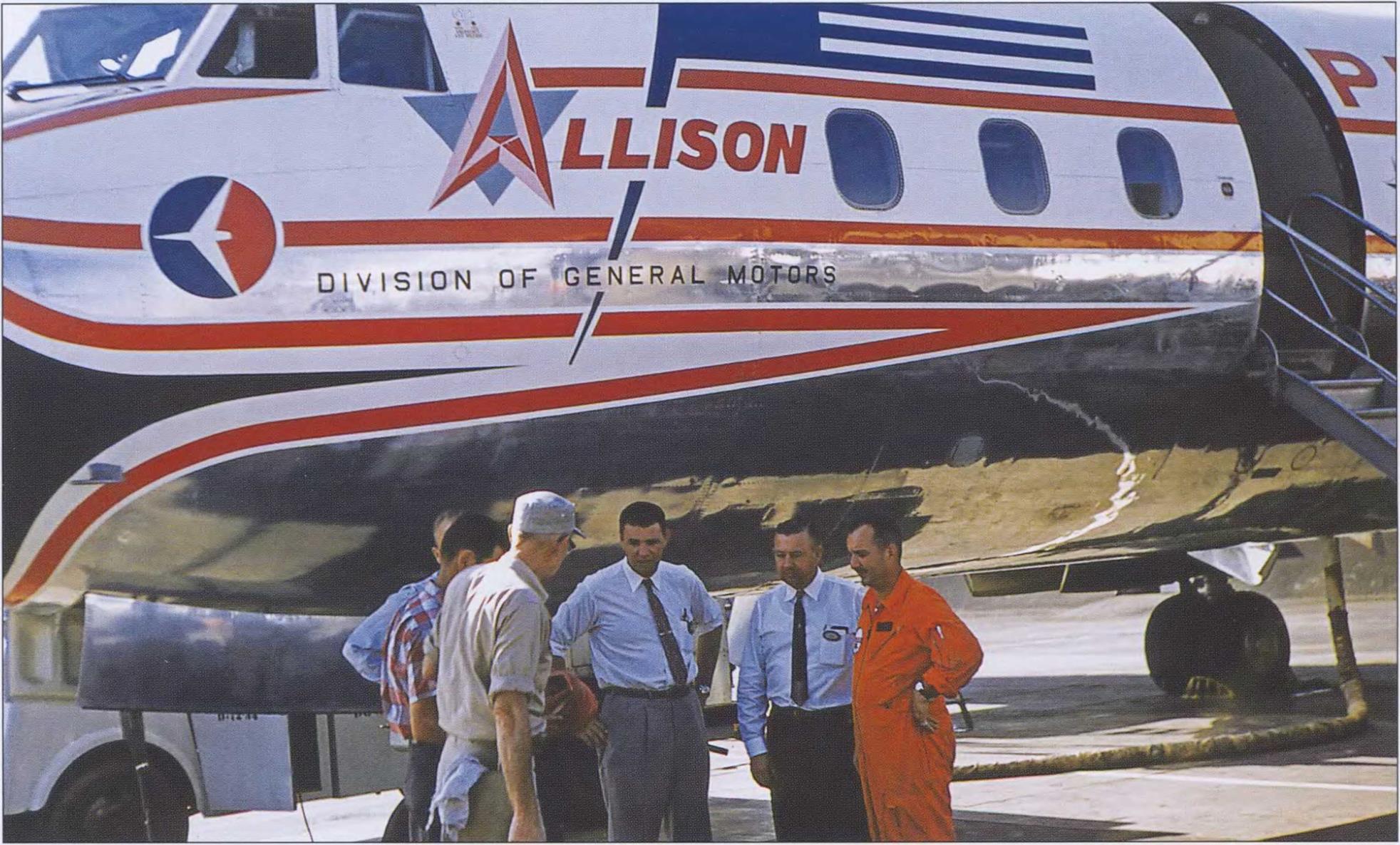Turboprops in Airline Service
Until Viscount 800s began flying with Continental Airlines on May 28, 1958, turboprop airliner service
within the United States was limited to points east of the Mississippi River, where Viscount 700s flew in the colors of Capital Airlines, which assured the type’s success with a massive order for 60 airplanes. From north of the border, Trans-Canada Air Lines brought its Viscounts into airports at Boston, New York, Detroit, Chicago, and Seattle.
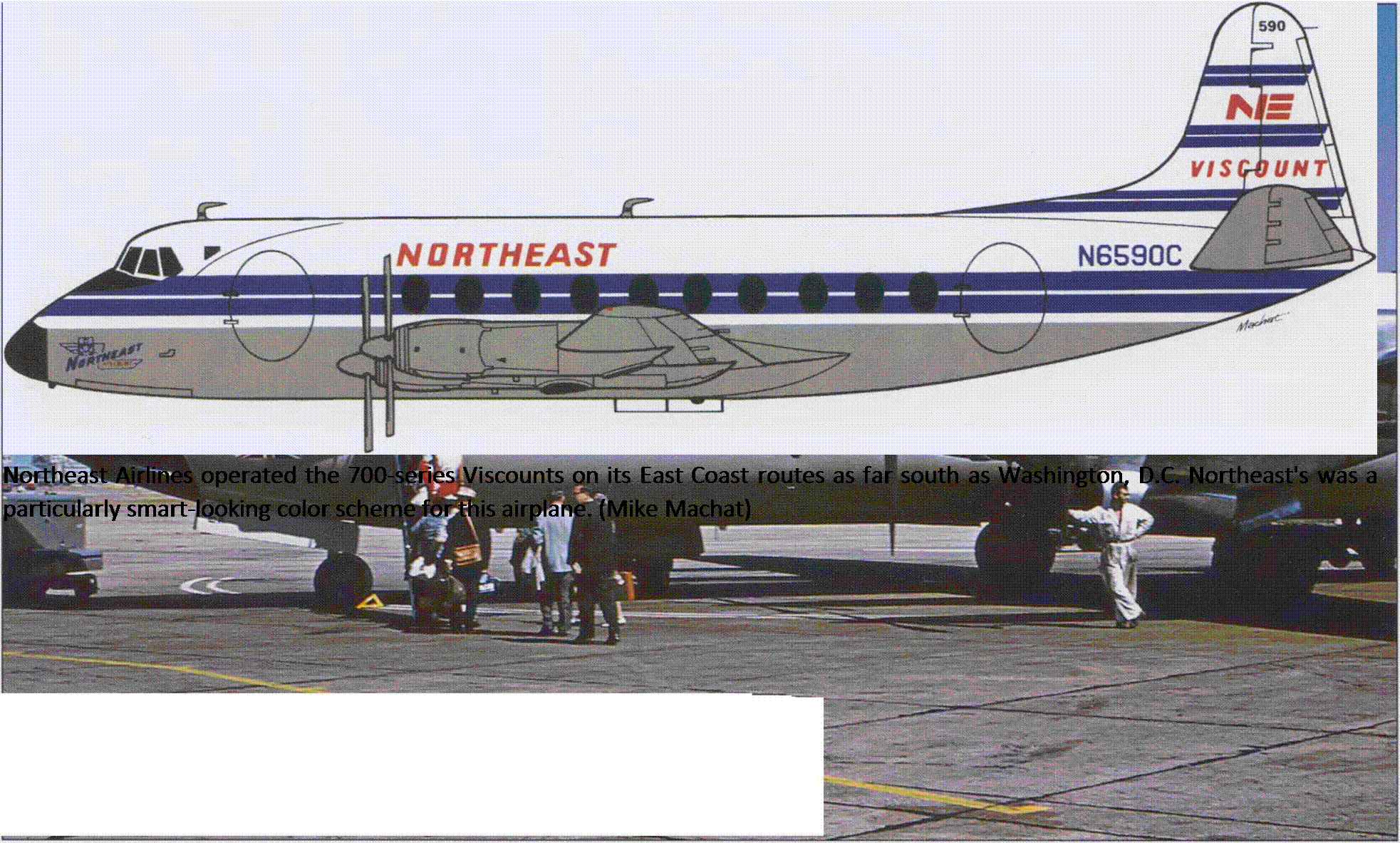
Based at Boston, quasi-regional-carrier Northeast Airlines took a small fleet of 10 Viscount 700s in lieu of a failed Bristol Britannia order, and enjoyed competitive
success with the type on shorter segments, including the dense Boston-New York-Washington commuter run. This then was the immediate Jet Age effect that the turboprop had on routes and passengers wherever the airplanes flew.
Its capacity on a par with the Convair 340 and 440, the Viscount distinguished itself with its speed and quieter interior noise level, while at airports its shrill whine was a familiar nuisance. Like the Capital, Northeast, and Trans-Canada turboprops, Continental’s larger, 56-seat Viscount II was all-first-class configured and advertised as “First in the West with Jet Power Flights,” operating between Chicago and Los Angeles with stops at Kansas City and/or Denver beginning May 28, 1958. Meanwhile, Club Coach DC-7Bs handled the Chicago-Los Angeles nonstops until Boeing 707s replaced the type in 1959. Viscount II service was later expanded to routes in Texas and across the southwestern tier of states.
The Fairchild-built F-27 started flying with West Coast Airlines in September 1958, marking the world’s first revenue Friendship service. The type was an ideal candidate in the growing local-service-carrier arena, but West Coast continued to operate DC-3s in smaller markets until the carrier became part of Air West in 1968.
Bonanza Air Lines began transitioning to turboprop service on March 25, 1959, when its first three F-27A Silver Darts began revenue flying. Barely 19 months later, the carrier retired its last DC-3 and claimed credit as America’s first all-jet-powered airline, growing the fleet to 16 airplanes.
|
Long, slim engine nacelles mounted on short, stubby wings was the design hallmark for Lockheed’s Electra, an airplane that was larger than the Vickers Viscounts but smaller than the Bristol Britannia. Introduced in 1959, Electras soon brought "jet-powered" airline service to smaller regional cities throughout the world. (Lockheed via Mike Machat Collection) |
Close behind, San Francisco-based Pacific Air Lines began flying F-27As up and down the West Coast on May 1, eventually operating an even dozen of the turboprops. The airline began further expansion with
|
|
The place where the Electra was born passes by the windows as this Eastern Electra takes to the air from Runway 17 at Burbank Airport. The section of the large hangar with the doors closed is the site of the famed super-secret Lockheed Skunk Works. The very beginnings of what became the SR-71 Blackbird program would have been going on inside that building when this photo was taken. (Lockheed via Mike Machat Collection) |
|
|
Legendary Lockheed test pilot Herman "Fish" Salmon (wearing the orange flightsuit) and other Lockheed personnel discuss a just-completed test flight with the Allison Engine Division Electra at Burbank in July 1958. (Lockheed via Mike Machat Collection)
second-hand Martin 404s about the same time. Together, the two variants permitted phase-out of Pacific’s DC-3s, which soldiered on until 1964.
In the eastern United States, Piedmont Airlines began upgrading with F-27s on November 14, 1958, growing its new turboprop fleet to eight. As with Pacific, Piedmont acquired used Martin 404s as well. Seventeen were purchased from TWA to replace DC-3s and came on board three years after the Fairchilds.
The first of seven F-27s for Midwestern operator Ozark Air Lines rolled off the Ffagerstown, Maryland, factory assembly line July 16, 1959, and was delivered only 11 days later. But the type did not begin earning revenue for Ozark until the following January. The carrier also flew seven Convair 240s in the early 1960s, then Martin 404s. Like most of the local-service carriers, Ozark continued to operate DC-3s well after the turboprops arrived and finally withdrew them for good in October 1968.
In Alaska, Northern Consolidated Airlines (NCA) and Wien Alaska F-27s transported freight and hearty passengers to small towns in the Last Frontier. NCA took advantage of the F-27B’s large cargo door to accommodate bulkier freight, while Wien operated F-27As. In Hawaii, Aloha Airlines operated the original model between Honolulu and island destinations.
Allegheny also operated F-27s but did not receive the type until the end of 1965. By then, carriers were looking to the stretched FH-227 model.
While the F-27 was ideally suited for local-service – carrier routes, the Lockheed 188 Electra became the turboprop of choice for trunk carriers, designed for short- to medium-haul segments while jets were assigned to longer legs. The Electra comfortably seated around 68 customers in four-abreast, first-class layouts plus a spacious, six-seat aft lounge.
On January 12, 1959, the first of 40 Electras began revenue service in the colors of Eastern Air Lines. These all-first-class Golden Falcon turboprops initially seated 66 and operated the carrier’s principal routes on the East Coast, spreading their wings to points as far west as San Antonio. It would be a full year before the type was superseded by Douglas DC-8-2 Is and began concentrating on shorter routes.
American Airlines Electra Flagships would have beaten Eastern’s into service were it not for a 22-day pilot strike that began on December 19, 1958. American considered placing the type into service on transcontinental nonstops for a short time while awaiting its first 707s, but the strike scotched that plan and revenue Electra flights began on January 23, 1959, between New York and Chicago, just two days ahead of the first 707 service. Seating capacity was 68, ideal for high-frequency service between Chicago and the East Coast, replacing DC-6 and DC-7 Flagships. The type was only scheduled as far west as El Paso. American bought 35 Electras, with an eye toward 25 more, but instead chose additional Boeing jets.
National Airlines, the first carrier to order Electras, took 14 from the factory and later 3 from American Airlines. Configured with 54 first-class and 18 coach seats, the turboprops entered service on April 23, 1959, on the New York-to-Miami route. They became National’s workhorse across the route system until the arrival of the airline’s first DC-8s in 1960, even serving on longer flights to the West Coast when the routes were awarded to National in 1961.
Dallas-based Braniff International Airways purchased 10 Electras, placing its first into service on June 15, 1959, and the type quickly began appearing at most of the airline’s North American destinations. Although sold as first-class service, the 188s featured a 70-seat, alternating four – and five-abreast, arrangement.
Advertised as “a totally new dimension in jet-age travel,” Western Airlines began Electra/JET service on August 1, 1959, between the West Coast cities of Los Angeles, San Francisco, Portland, and Seattle. Two months later turboprop flights were added to Salt Lake City, Denver, and Minneapolis, as the fleet expanded to five, 66-seat, first-class-configured airplanes. Seven more Electras followed with the last delivered in 96-seat, all-coach layouts, lacking a lounge. With pure-jet service beginning a year later, the turboprops assumed shorter segments and continued to replace Convair 240s and DC-6Bs.
Northwest was the only U. S. carrier to operate nonstop, coast-to-coast Electra flights, briefly between Seattle and New York, again while awaiting pure jets. Foregoing the aft lounge, the airline’s 188Cs were delivered in a mixed configuration featuring both Imperial first-class and Coronation coach. The first was delivered on July 19, 1959, and entered service on September 1, 1959. Medium-haul work was the norm for these 18 turboprops, which were reassigned to even shorter routes with the delivery of more jets.
Intrastate California operator Pacific Southwest Airlines, more commonly known as PSA, found the Electra to be a perfect fit for its routes between San Diego and San Francisco, with most flights stopping at Los Angeles International or Hollywood-Burbank, where the type was built. Seating 98 passengers, including 6 in the lounge, PSA’s Electra Jets boasted a
Ф
25-minute time between San Diego and the L. A. basin, and one hour to San Francisco. With cheap fares and frequent service, PSA thrived with this rugged airplane, its first type to be purchased new. Initially, three 188Cs replaced four DC-4s, followed by three more Electras including the prototype, refurbished after taking part in the type’s certification program.











